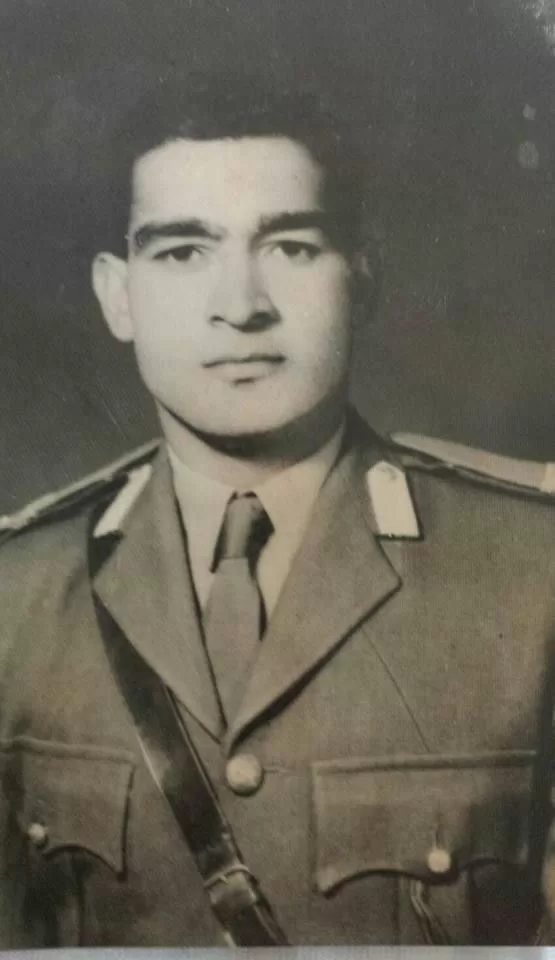Displaying exceptional leadership and unwavering courage, Major Sabir Kamal Meyer Shaheed, along with his brave comrades, made the ultimate sacrifice while effectively slowing down and eventually halting the enemy’s advance. By successfully destroying several enemy tanks and inflicting significant casualties, he played a pivotal role in repulsing the enemy’s attack. He emerged as a symbol of defiance, demonstrating exemplary skills in commanding his troops and leading by personal example.
The Meyer Brothers, like the Alam Brothers, have two things in common, educated at Lawrence College Ghora Gali (LCGG) and were in the armed forces of Pakistan, with a rare chemistry and unmatched legacy. I am blessed to have been a contemporary of three Meyer Brothers (Baber, a class senior, Javed, my classmate, and Rizwan, a class junior). While I was at Lawrence College, the name Sabir Kamal Meyer was revered and legendary.
Having written several books and articles on the heroes of Pakistan, I am at a loss for not having written earlier about this great man. I will do my utmost to cover his life holistically by covering his great family, his stint in Lawrence College, and his glorious life in Pakistan Army, where he etched his name in crimson as one of the bravest.
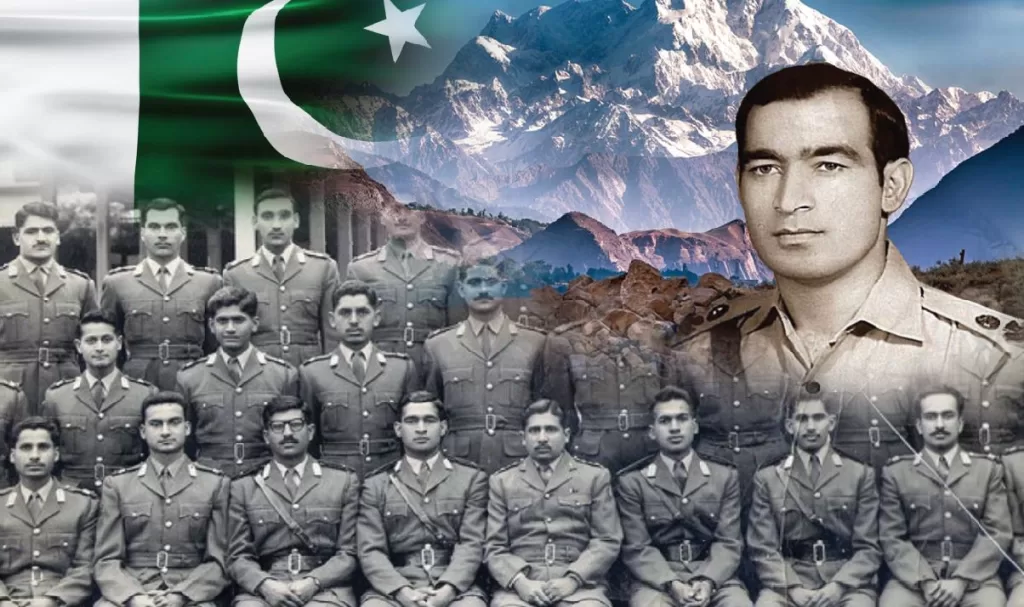
Brothers
- Lt Col Zafar Iqbal Meyer
- Asad Kamal Meyer
- Lt Col Saeed Kamal Meyer
- Maj Sabir Kamal Meyer
- Maj Baber Kamal Meyer
- Col Javed Kamal Meyer
- Rizwan Kamal Meyer
Sisters
- Parveen (Teacher at Lawrence College)
- Sitara Jameel
- Rashida Zarrar
- Saeed Latif
He was born on December 6, 1939 in Hazaribagh (the land of a 1000 gardens, now in India), hailing from a family of seven illustrious brothers and four sisters (all brothers were old Gallians, and five of them served in Pakistan Army). The details are as under:
Major Sabir Kamal Meyer Shaheed’s family background is immersed in a tradition of resilience, diligence, and unwavering resolve. His father, Sher Mohammad Meyer, was a prosperous businessman, providing logistical support to the Allied Armies in India. He remained steadfast in ensuring the finest education for children. While at Hazaribagh, he sent his sons to the esteemed Colonel Brown School in Dehradun.
The partition of India presented Sher Mohammad Meyer with immense challenges and upheaval. Fearing for his life, he left India hastily, leaving behind all his possessions and business, to reunite with his family.
After the partition, he acquired a house in Murree to ensure his children received quality education. He enrolled his sons at Lawrence College and his daughters at the Presentation Convent in Murree.
The Meyer family’s presence at Lawrence College spanned several decades, from the 1940s to the 1990s, leaving an indelible impact on the institution. Notably, Zafar Iqbal Meyer, Sher Mohammad’s eldest son, became the first Old Gallian post-1947 to join the PMA. The Meyer family’s sacrifices and commitment to education have left a lasting legacy, shaping the lives of future generations at Lawrence College.
Javed Chaudhri, a contemporary of Sabir Kamal at Lawrence College, says, “Sabir Kamal was a soft-spoken and kind-hearted gentleman with a delightful sense of humor. He could talk to his peers and juniors with the same respect, unlike a lot of older boys who tended to bully the younger ones. He was not much of an academic, but had intelligence and was practical-minded, which enabled him to be an excellent soldier.
I watched him achieve several successes in LCGG, and the vision has never been erased from my mind, even after 66 years. I saw him set the high jump record of clearing a height of 5.10 inches at LCGG, and we all marvelled that he had cleared a height as high as he was himself. I remember that it was a scissors technique he had practised while being coached by Mr. Mueenuddin, then Peake Housemaster and games master. He later set a record for the Commonwealth Military Academy Games of 6 feet, but it was when I saw him throw the discus that I realized he was the epitome of the Greek athlete. I saw him hold the discus between his thumb and forefingers, swirl and throw in the most graceful motion to set another Lawrence College record. None of the Gallian athletes could ever exhibit the grace and control of his body and throw the discus.
He was also a cricket, hockey and soccer player. He played hockey in the PMA team. What Lawrence College taught was to serve the country and remain true to the alma mater’s standards of integrity, honesty, courage, and loyalty, to love the life of battle good and dear the land that gave you birth.”
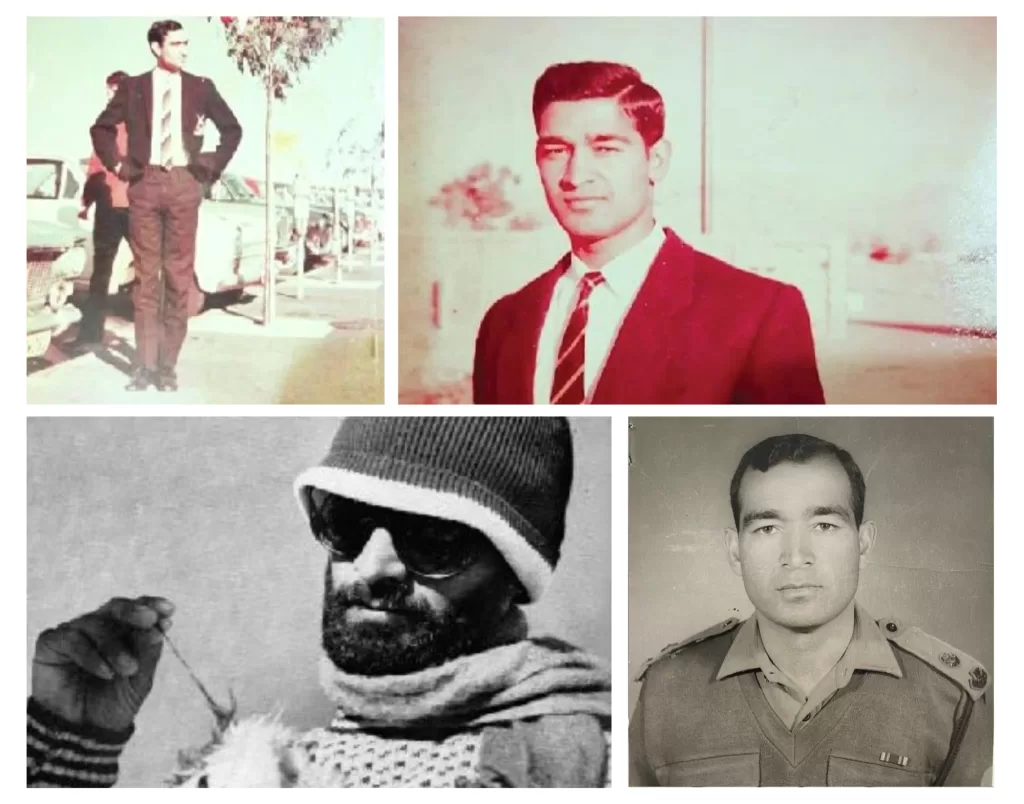
He stood up to all he was taught and made his alma mater proud.
He passed his Senior Cambridge Exam in 1957, and after completing his studies at Lawrence College, Sabir Kamal Meyer joined PMA, where he continued to excel. He was known for his discipline, leadership qualities, and strong sense of duty, earning him the Battalion Senior Under Officer (BSUO) position. His dedication to his training and commitment to the Army was evident, and it was clear that he was destined for greatness.
After graduating from PMA on April 22, 1962, Sabir Kamal Meyer embarked on an illustrious military career. He joined the esteemed 10 FF (Frontier Force), one of the oldest Piffer Battalions, and dedicated over three and a half years to their service. On November 19, 1965, he was transferred to 25 FF, further enriching his experience and expertise. From 25 FF, he was transferred to Army School of Physical Training (ASPT) as Instructor Class C on August 28, 1967.
During his tenure at ASPT, Sabir Kamal Meyer’s innate sense of adventure and deep appreciation for nature fueled an unwavering passion for mountaineering. As a result, he emerged as one of the foremost Army mountaineers, renowned for his remarkable achievements.
Notably, Sabir Kamal Meyer’s indomitable spirit led him to conquer the majestic Tirich Mir as a vital member of a Norwegian expedition.
Beyond his extraordinary climbing abilities, Sabir Kamal Meyer’s exceptional leadership qualities and unrivalled skills propelled him to establish the Army School for Mountaineering and Warfare. Situated within the esteemed Army School of Physical Training (ASPT) in Toba Camp, Abbottabad, this institution became a testament to his dedication and vision. By establishing the Army School for Mountaineering and Warfare, Sabir Kamal Meyer aimed to foster a new generation of skilled mountaineers within the Army. He recognized the significance of comprehensive training in the art of climbing and the intricacies of mountain warfare.
Under his guidance, the school became a centre of excellence, equipping soldiers with the necessary knowledge and skills to conquer challenging terrains while ensuring their safety and preparedness for any combat situation.
Sabir Kamal Meyer’s enduring legacy at the ASPT inspires countless individuals, instilling a profound admiration for nature and the pursuit of adventure. His contributions to mountaineering and his commitment to training future generations are a testament to his unwavering passion and dedication, leaving an indelible mark on the military and mountaineering.
He exhibited remarkable proficiency in various shooting disciplines, excelling in rifle, pistol shooting, and heavy weapons such as the Recoilless Rifle (RR). Recognizing his exceptional abilities, GHQ handpicked him to lead the Pakistan Army Rifle Association (PARA) team.
In August 1965, he captained the PARA team to Turkey for a competition. Still, he abruptly returned upon learning of the commencement of the Indo-Pakistan War of 1965, demonstrating his unwavering dedication to his service in Pakistan Army and joining his battalion in the operational area. He was posted to 13 FF on February 25, 1969 then stationed in Sialkot. The battalion relocated to Quetta on November 12, 1970. Unfortunately, before they could fully settle in, the battalion received orders for conversion from their traditional role as a Recce and Support Battalion (R&S) to a standard infantry battalion, effective from January 1, 1971.
Halfway through this transition, the battalion was hurriedly ordered to move to East Pakistan, for which they embarked on February 26, 1971, travelling by PIA/C-130 aircraft.
13 FF Operations: April 8-17, 1971
Upon their arrival in East Pakistan, Major Sabir Kamal Meyer played a pivotal role in safeguarding Dacca Cantonment and its vital airport. His exemplary leadership and tactical expertise were instrumental in repelling enemy attacks and ensuring the security of the cantonment.

Additionally, he displayed immense courage and bravery while leading his troops in operations to clear the Dacca-Archia-Pabna-Ishurdi-Natore-Rajshahi axis.
Major Sabir Kamal Meyer’s exceptional performance and leadership qualities were duly recognized. He was awarded two separate Sitara-e-Jurat (SJ), one from 13 FF and another from 4 FF, for his extraordinary bravery and dedication. His actions are briefly stated from the original battle accounts of 13 FF and 4 FF.
The Capture of Paksey Bridge: April 11, 1971
After receiving information about the reported killing of non-Bengalis in Paksey town, 13 FF was urgently tasked with rescuing and protecting them. Their initial mission was to secure and maintain control over the home bank of the Paksey Bridge, for which B and C Companies swiftly mobilized through troop-carrying vehicles and dismounted to quickly form a charge on the home bank of the bridge.
The rebels, firing from well-established trenches on the home bank, eventually surrendered, or a few fled to the far bank through the bridge.
The Brigade Commander, witnessing this success and the importance of saving the lives of thousands of non-Bengalis as his top priority, ordered immediate action.
The Commanding Officer (CO) of 13 FF received his orders at 0800 hours on April 12, 1971, which read, “13 FF to capture far bank of Paksey Bridge and establish a bridgehead measuring approximately 1500 by 1500 yards by 0500 hours on April 13, 1971.”
The commanders faced a formidable dilemma as they assessed the limited resources and time for a proper assault river crossing against well-entrenched rebels. The situation was further complicated by concerns of potential mining or sabotage on the bridge, adding to the already challenging circumstances.
The alternative involved an assault through the railway bridge, a narrow and heavily fortified bottleneck manned by rebels armed with automatic weapons. The rebels had fortified positions with overhead covers, creating a deadly trap. The risky proposition defied the fundamental principles of warfare and carried minimal chances of success, amplifying the immense dangers at hand.
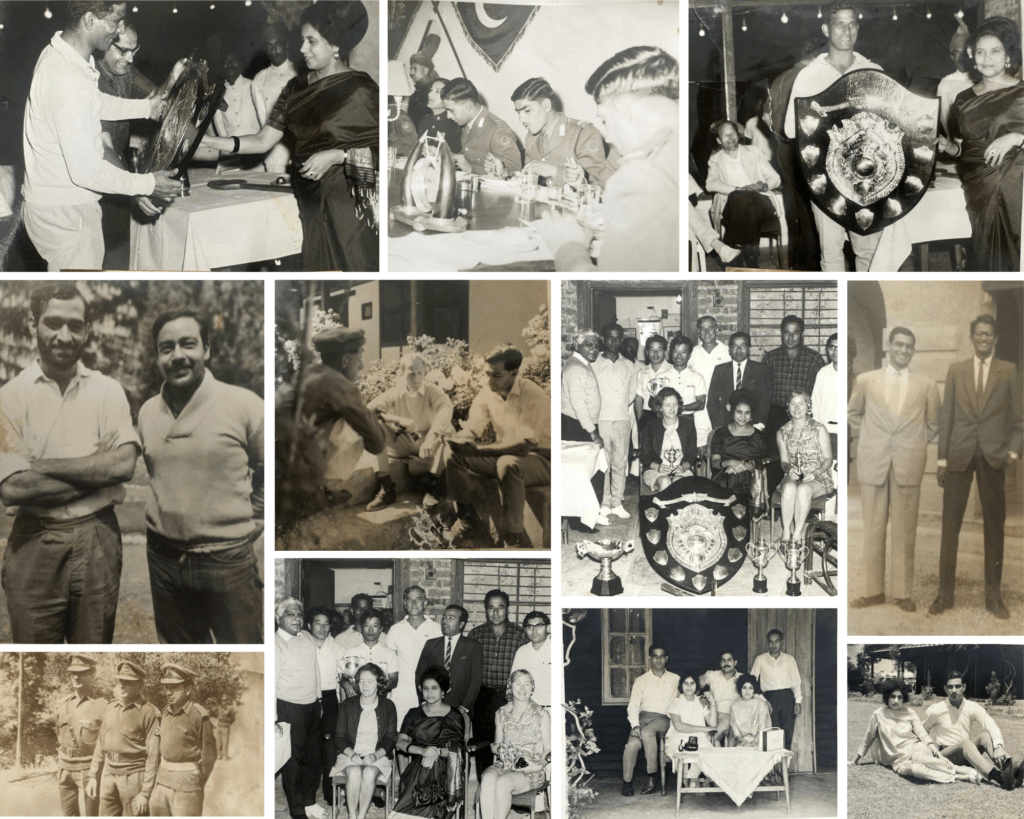
The CO ordered Major Sabir Kamal Meyer to forge ahead without any delays. At approximately 0515 hours, Major Sabir Kamal Meyer reached the bridge and briefed Captain Ishrat Ullah Qadri about the plan. Fearlessly, Major Sabir Kamal Meyer, along with Captain Ishrat Ullah Qadri, Naib Subedar Ehsan Ullah (the leading Platoon Commander), and Havildar Khuda Dad positioned themselves at the forefront. Major Sabir Kamal Meyer instilled confidence in his troops through personal example and unwavering courage. He led the charge, and after neutralizing the initial rebel positions, his company pressed forward to confront the entrenched adversaries. Through a quickly prepared plan, Major Sabir Kamal Meyer and Captain Ishrat Ullah Qadri decided on an assault, with C Company attacking the left half from the railway line to the river bank. At the same time, under Major Sabir Kamal Meyer’s command, B Company engaged the right half from the railway line to the bend on the river bank. By 0930 hours, they achieved a monumental triumph as they captured the historic Paksey Bridge and went beyond it to establish a bridgehead.
This audacious and perilous charge through the treacherous bottleneck, devoid of planning or ample resources, served as an extraordinary feat worthy of future study and reflection, thanks to the bravery of these young officers and the 300 other enlisted personnel who accomplished the mission. CO 13 FF recommended him for a well-earned Sitara-e-Jurat.
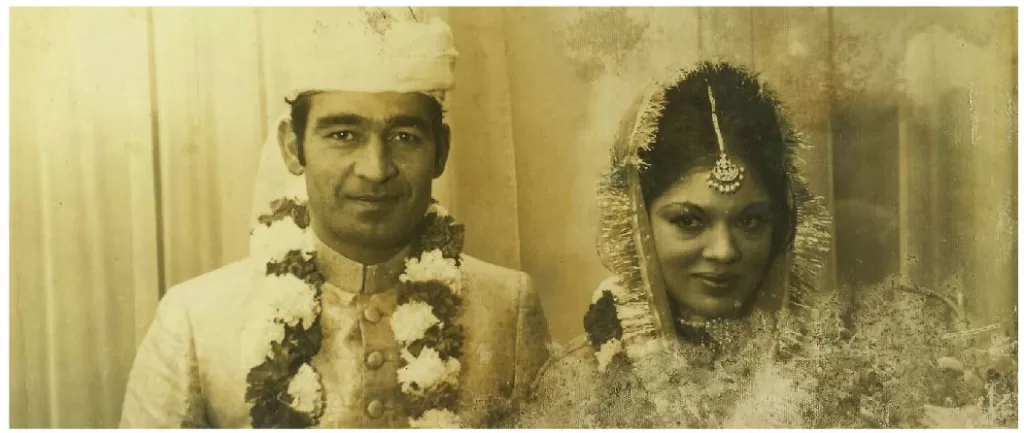
His Marriage
Amid a lull in the battle, he sought to leave and travelled to Spain, where his future father-in-law, Major General Abid Bilgrami, served as Pakistan’s Ambassador. Major Sabir Kamal married Ms. Zara Bilgrami, and their time together, although brief, was filled with happiness. They explored Europe before returning to Pakistan and visiting the scenic northern areas, which held a special place in his heart. Tragically, Major Sabir Kamal was unaware of receiving his first Sitara-e-Jurat decoration during his lifetime. The announcement came in early December 1971, but he had already embraced martyrdom by the time the news reached East Pakistan.
Major Sabir Kamal Meyer Shaheed’s life and dedicated service to the nation will continue to inspire all Pakistanis. His legacy will endure for generations, serving as a reminder of sacrifice and patriotism. May Allah bless his soul, granting him a place in the highest ranks of heaven, and may he rest in eternal peace. Amen!
Operations under 4 FF (inputs from Brig Mumtaz Malik, SJ, who recommended Major Sabir Kamal for SJ): The Situation at Bhaduria Front (December 7-11, 1971)
In an extraordinary turn of events, an officer serving as GSO-1 (Int) at HQ Eastern Command, under Lt Gen Amir Abdullah Khan Niazi’s leadership, learned about the CO of 4 FF’s evacuation from the battlefield, with half of the battalion sustaining casualties.
Recognizing the critical situation, he requested his commander to allow him to take command of his battalion in the ongoing raging battle. Without hesitation, he swiftly travelled from Dacca to the battlefield and assumed command of 4 FF on November 27, 1971. In his own words, the battle unfolded with him leading his troops through the most challenging circumstances. “After the capture of Charkoi on December 4 in addition to its multiple thrusts in various directions, the Indians launched a battle group comprising the 17th Kumaon Regiment supported by a squadron of armour and artillery towards Bhaduria on December 8. In the light of the impending threat to our Brigade’s vital flank from where a breakthrough by the Indians would have also threatened Ghoraghat and our rear areas behind Hilli.
As the Acting Commander of 205 Brigade, I created a Brigade Reserve of a company of 13 FF (commanded by Major Sabir Kamal) and a company of 8 Baloch (commanded by Major Mujtaba Hassan) and deployed them at Bhaduria by the morning of December 8.
Company of 13 FF as the left-forward company based in Tulsi-Ganga and the company of 8 Baloch as a right-forward company based in the built-up area of Bhaduria. The Indians contacted our positions by the evening, even before our positions were ready. This task force was placed under the direct command of Headquarters 205 Brigade and was assigned to act as the Brigade flank guard.
On December 10, one platoon of the Alpha Company of 4 FF was sent to Ghoraghat to beef up the ad-hoc force mustered by the Brigade Headquarters for its defense. Major Sabir Kamal and his company put up a very brave and gallant fight but, in the process, his SJCO and many others got killed or wounded. Major Mujtaba’s ‘A’ Company, 8 Baluch held on rather precariously and very bravely, until tank light, when the attack petered out. As Acting Brigade Commander, I personally conducted the battle of Bhaduria and was the last man to have spoken to Major Sabir Kamal, before he embraced Shahadat and was also the one who initiated the citations of both company commanders and Subedar Sher Afzal. Further details of the actions of Major Sabir Kamal are given below.”
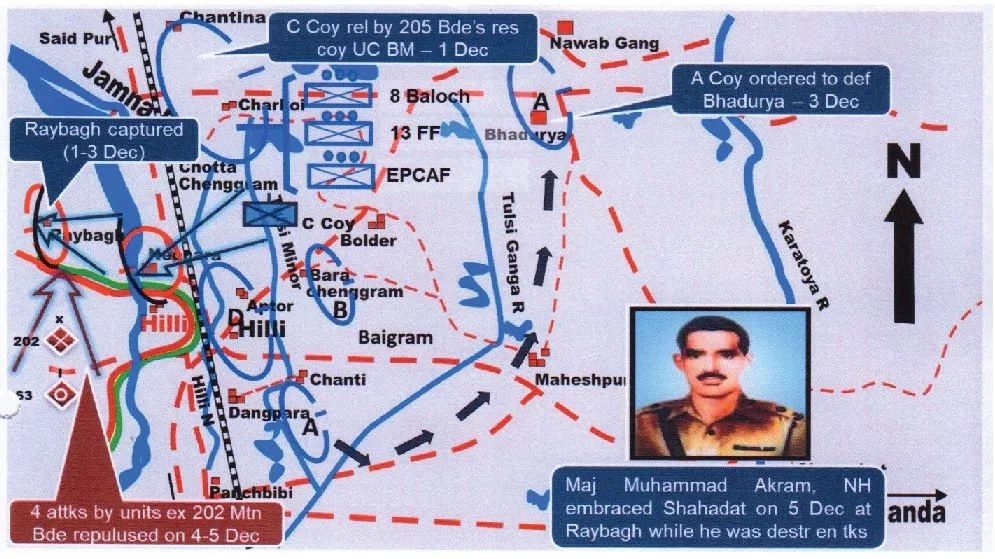
CITATION
PA-6485 Major Sabir Kamal Meyer (Shaheed) SJ Company Commander B Company 13 FF
Major Sabir Kamal Meyer SJ (Shaheed) commanded a company throughout the rebel operations from April 1971 till the December 71 War in East Pakistan. The performance of this officer had been excellent throughout, for which he was awarded an SJ on December 8 71, the day he laid his life while fighting the Indians at Bhadaria in the Hilli Sector: repeating his performance with the award.
On December 7, 1971 (AN), Major Sabir Kamal Meyer (Shaheed) and his company reached the Bhadaria area in the Hilli sector as reinforcement where heavy fighting was going on. Soon after arrival, he deployed his company in the given area during very heavy enemy shelling. He sent one platoon ahead of his company position as a screen and put Subedar Sher Afzal (Shaheed) with his platoon as left forward while he located himself with the right forward platoon.
During the preparation of defences, heavy shelling by the enemy continued, but Major Sabir Kamal Myer (Shaheed), with complete disregard for his safety, moved from position to position and trench to trench, inspiring confidence in his men by displaying courage and setting a personal example, which helped a lot in timely preparation of the defense positions.
At about 1600 hrs. on December 8, 1971, the enemy opened up, bringing heavy artillery fire on all locations. The screen reported an enemy tank regiment heading for the company positions, moving cautiously, doing fire and move. After some time, the screen position was overrun. Two OR with their LMGs were crushed by a tank in their trench, while the enemy tank shell blew off the JCO Platoon Commander after he fired a 75 MM RR.
Having established the direction of the enemy tanks, Major Sabir Kamal Meyer, SJ (Shaheed) instinctively rushed and with complete disregard for his safety, personally moved the 106 MM RR of 34 Punjab R&S from the right forward platoon to the left forward platoon, quickly bringing it into action behind a 3/4 ft wall.
By this time, the leading tanks were within approximately 800 yards of his position. This brave officer, R&S trained, RR qualified and known to be a good firer, personally sat on the RR for fire. He ordered the crew that after his fire, they were to move the RR to another shown position. Major Sabir Kamal Meyer, SJ (Shaheed) asked his Platoon Commander, Subedar Sher Afzal, SJ (Shaheed), to see a sure hit of the leading tank at 800 yards. Sure, enough, it was a hit: one of the tanks went into flames.
The officer quickly jumped, went into a kneeling position and watched the enemy tank through his binocular while the crew was about to move the RR to the next post. Major Sabir Kamal (Shaheed) told them, “Hurry up and watch out; the tanks are aiming their gun in our direction”. With this last word out of his mouth, 2/3 tanks fired their main guns and .30 browning simultaneously.
Major Sabir Kamal Meyer, SJ (Shaheed) was hit by an enemy tank shell and a burst of 50 browning in his chest and died on the spot while the RR and the JCO were blown off with the fire of another tank.
This brave officer laid his life along with his men but succeeded in slowing down and halting the enemy’s advance, finally repulsing their attack after his troops destroyed a few more tanks, inflicting heavy casualties on the enemy. Major Sabir Kamal Meyer, SJ (Shaheed) had thus acted as a great symbol of defiance and displayed exemplary skill in handling his troops, setting a personal example.
For these acts of courage, valour, bravery, sense of duty and extreme sacrifice demonstrated by this brave officer, in the face of the enemy, eagerly laying his life firing an RR; that too of another unit; which was certainly beyond the call of his duty, I strongly recommend PA-6485 Major Sabir Kamal Meyer SJ (Shaheed) for the gallantry award of “Bar to Sitara-I-Jurat” Posthumous.”


